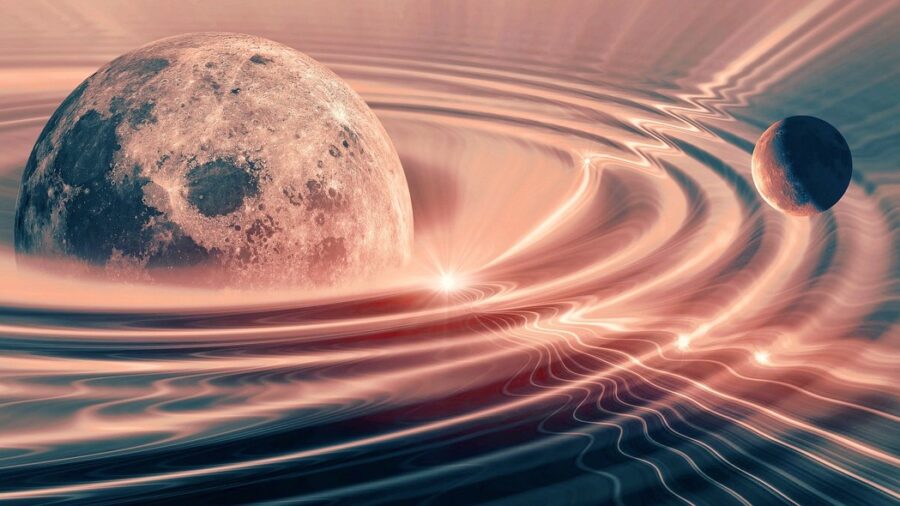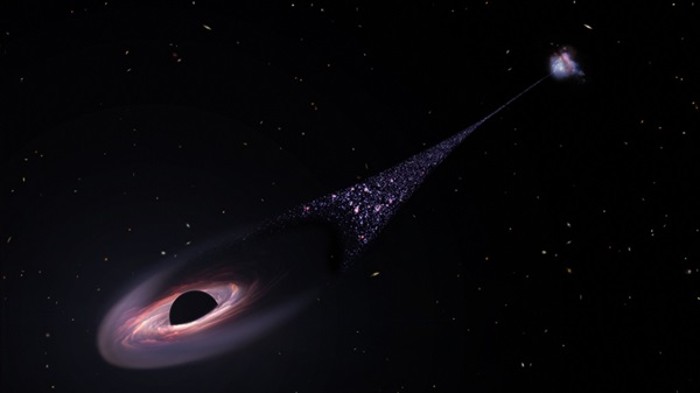Scientists Hear Gravitational Waves Traversing The Universe For The First Time
Scientists listened to gravitational waves created by some of the universe's biggest objects for the first time ever.

Breaking news in the science world—For the first time ever, scientists have listened to gravitational waves caused by the movement of black holes. This breakthrough discovery marks the first time scientists have obtained evidence of the large-scale motion that affects the very foundation of our universe, according to CBS News.
By “listening” to these low-frequency waves, researchers are gaining valuable insights into the cosmic phenomena caused by the movement and collisions of massive objects in space.
Albert Einstein had a theory in astrophysics that suggested that incredibly massive objects move through spacetime and generate gravitational waves that ripple throughout the universe.
Poetically, scientists refer to these waves as the background music of the universe. In 2015, the Laser Interferometer Gravitational-Wave Observatory (LIGO) experiment confirmed Einstein’s theory by detecting gravitational waves for the first time.
Discovering that Einstein was right about gravitational waves was a momentous discovery, but it took eight more years for scientists to finally hear the theory come to life. Previous methods of listening to these waves focused on capturing high-frequency waves, often described as quick “chirps” resulting from the collisions of small black holes and dead stars.
It wasn’t until they started looking for lower frequencies that scientists began to hear waves caused by some of the biggest objects in our universe.
The recent research sought to detect gravitational waves at significantly lower frequencies, corresponding to slow ripples that may take years or even decades to complete a full cycle.
These long-duration waves likely originate from the colossal supermassive black holes that exist billions of times more massive than our sun, residing at the centers of galaxies. The galaxies themselves are in a constant state of collision and merger, leading to the convergence of their central black holes.

These massive binary systems, known as supermassive black hole binaries, gradually orbit each other before ultimately merging. During their orbital dance, the black holes emit gravitational waves.
Capturing the ripples from these enormous objects required the development of a detector on a scale comparable to that of a galaxy. The researchers involved in the study, part of the North American Nanohertz Observatory for Gravitational Waves (NANOGrav) collaboration, have been using telescopes across North America to search for these waves.
By observing pulsars (dense remnants of dead stars that emit regular radio waves as they spin), scientists could detect the effects of gravitational waves.
While scientists have yet to pinpoint the precise origins of the low-frequency waves, they have unveiled a pervasive hum resonating throughout the cosmos and have gained a deeper understanding of the universe’s hidden dynamics.
The intensity of the background noise detected suggests the possibility of a greater number of black hole mergers or even the presence of additional sources of gravitational waves, challenging our current understanding of the cosmos.
Continued research on these low-frequency gravitational waves holds tremendous potential for unraveling the mysteries of the most massive objects in our universe. This new window into the universe could lead to breakthroughs in the field of “cosmic archaeology,” enabling scientists to trace the history of black hole mergers and galaxy formation.
Knowing more about these waves can allow us to learn more about our universe, our history, and the cosmic expansion that followed the Big Bang.












